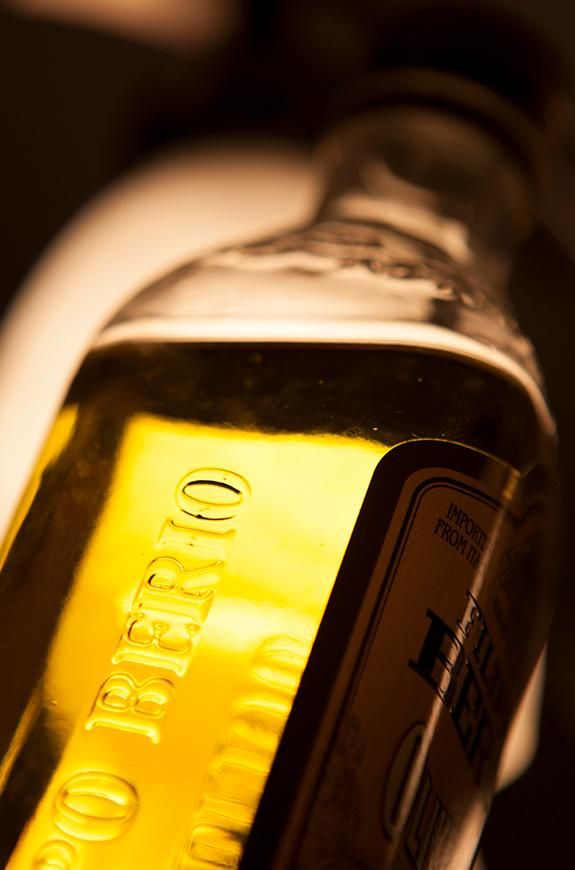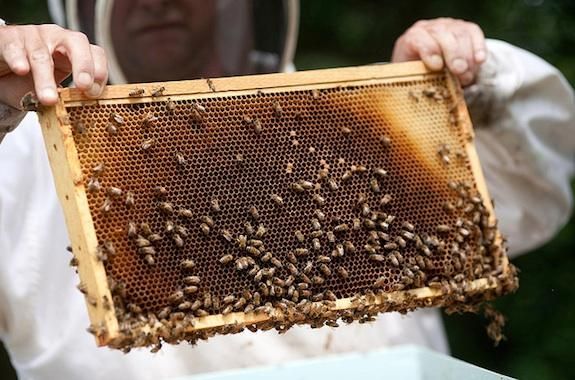Don’t Get Duped: Six Foods That Might Not Be The Real Deal
Colored sawdust instead of saffron? Corn syrup instead of honey? It’s all in the newly updated USP Food Fraud Database
/https://tf-cmsv2-smithsonianmag-media.s3.amazonaws.com/filer/20130204010054Fake-Food-Lombroso-Thumb.jpg)
Is your lemon juice really citrusy sugar water?
Is that hunk of white tuna sushi actually escolar, a cheaper fish associated with its own kind of food poisoning?
And is your age-defying pomegranate juice just plain-old grape juice with a splash of the good stuff?
After winning a seat in the pantheon of so-called “super foods,” pomegranates got a burst of popularity, with consumers craving everything from fresh seeds to juices and teas. But its newfound fame also found it the victim of an age-old problem: food fraud. According to the non-profit organization U.S. Pharmacopeial Convention (USP) in Maryland, pomegranate juice was the most common case of food fraud in the past year, often watered down with grape or pear juice to cut costs.
The group operates the Food Fraud Database, which went live in April 2012 and recently added 800 new records. Other usual suspects from the scholarly articles, news accounts and other publicly available records include milk, honey, spices, tea and seafood.
Though senior director of food standards Markus Lipp says we enjoy a high level of food safety in the United States, he also warns, “The real risk of adulteration is that nobody knows what’s in the product.”
Adulteration, according to the Food and Drug Administration, includes foods in which, “any substance has been mixed and packed with it so as to reduce or lower or injuriously affect its quality or strength,” including, added poisons or deleterious ingredients. Sometimes contaminants pose severe health risks, as was the case with the tainted milk from China in 2008. But often it’s a matter of using a cheaper, but still legal product to cut another.
To avoid fraud, Lipp subscribes to the idea that if the price seems too good to be true, it probably is, particularly for liquids. And for ground foods, like spices, coffee and tea, Lipp suggests buying whole food products to have a better sense of what’s really in there.

Liquids
1. Olive Oil: Olive oil might have the distinction of being the oldest adulterated good. “Olive-oil fraud has been around for millenia,” according to the New Yorker. Cut with sunflower and hazelnut oils, olive oil was considered “the most adulterated agricultural in the European Union” by the late 1990s. Even after a special task force was formed, the problem remains. In his 2012 book, “Extra Virginity: The Sublime and Scandalous World of Olive Oil,” Tom Mueller writes about the ongoing fraud. Mueller tells the New Yorker, “In America, olive-oil adulteration, sometimes with cut-rate soybean and seed oils, is widespread, but olive oil is not tested for by the F.D.A.—F.D.A. officials tell me their resources are far too limited, and the list of responsibilities far too long, to police the olive-oil trade.”

2. Honey: In 2011, honey was at the center of the largest food fraud case in United States history, along with “a network of co-operatives in Asia, a German conglomerate, jet-setting executives, doctored laboratory reports, high-profile takedowns and fearful turncoats.” The $80-million case involved a flood of cheap honey imported into the United States after being contaminated first with antibiotics and then with “corn-based syrups to fake the good taste,” according to the Globe and Mail. A quick search on the USP database reveals the problems persists, with added sweeteners like corn, cane and beet syrups.
Spices and Ground Goods
3. Saffron: Corn silk, dyed onion, beet fiber and sandlewood dye; these are a few of our least favorite things, that get passed off us as saffron, according to USP. Lipp says it’s particularly easy to disguise other products as higher quality spices because the fine grain hides discrepancies. “If I buy ground black pepper, I obtain a fine powder of a gray speckled mess,” he says. But if he buys whole black peppercorns, Lipp says he can, “just by visual inspection, make sure there’s not a large amount of twigs or any other low-grade materials in it or anything else but black pepper.”
4. Tea: Suffering from a similar “speckled mess” problem as saffron, ground tea can disguise adulterants like, turmeric, copper salts and even sand and colored sawdust, according to database results. Loose leaf teas may offer a more reliable route, plus you can take up a cool new hobby and learn to read tea leaves.

Condiments
5. Wasabi: You watched Jiro Dreams of Sushi and now you’re eating your way through all the Japanese eateries within a 50 mile radius, but–and no disrespect to the fine establishments you frequent–are you actually eating real wasabi? That kick in the sinuses may actually be courtesy of horse radish, mustard and food coloring, not paste made from grated wasabi root. Fortunately, horseradish still manages to get the job done but if you want the real thing, you may have to do some digging.
6. Sriracha: This “hipster ketchup” that is “so popular, that people are counterfeiting it,” recently got the rundown on the radio show, The Dinner Party. The mix of jalapenos, garlic, sugar, salt and vinegar comes in an iconic rooster-stamped, green-capped bottle from California’s Huy Fong Foods. And though there is a town in Thailand called Sriracha, Randy Clemens, author of “The Sriracha Cookbook,” told the Dinner Party, the hot sauce there is very different from the mix hipsters love so dearly, though it involves the same core ingredients. In an attempt to capitalize on Huy Fong’s success, bottlers have begun mimicking the brand, even replacing the rooster with a unicorn in one instance. Less a matter of faked ingredients, it’s still pretty misleading and falls under the FDA’s regulations on “misbranding.” To make sure you’re getting the real Huy Fong deal, Clemens says, “You want to look for the green cap.”
Curious about what might be in your favorite food? Check it out on the Food Fraud Database.
/https://tf-cmsv2-smithsonianmag-media.s3.amazonaws.com/accounts/headshot/Leah-Binkovitz-240.jpg)
/https://tf-cmsv2-smithsonianmag-media.s3.amazonaws.com/accounts/headshot/Leah-Binkovitz-240.jpg)